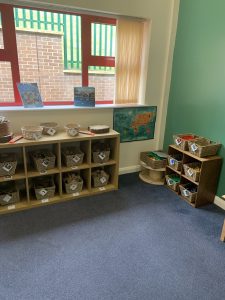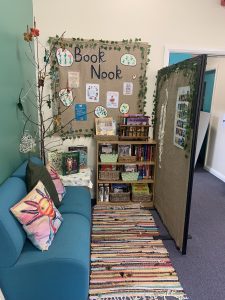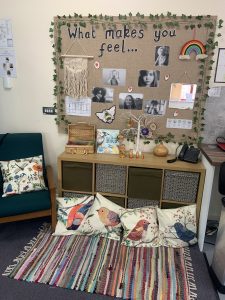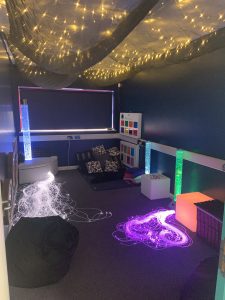Provision
Our Vision
Inclusion is a universal human right. We embrace all children irrespective of race, gender, disability, medical or other special educational need. It is the right of parents and children to access mainstream education alongside their peers, where parents want it and children’s needs can be met.
We believe that the school environment should be a place that all children can access every day, in order to participate equally, confidently and independently in activities.
The focus is on the individual child. Therefore in our school we adapt to the needs of the child, modifying their curriculum, where necessary, in order for them to learn. We believe in actively removing any barriers for learning to provide the same access and opportunities for learning, developing skills, knowledge and most importantly, independence.
‘What a child can do today with assistance, she will be able to do by herself tomorrow.’ Lev S. Vygotsky
Since January 2021 we have been working with Wellspring Trust to develop our SEMH and well-being approach. Click here to read the report: Grove House School Report – SEMH
Our Offer
| Communication and Interaction (C&L) | Social, Emotional and Mental Health (SEMH) | Cognition and Learning (C&L) | Sensory and/ or Physical | |
|---|---|---|---|---|
| Quality First Teaching (QFT) Class teacher input via excellent targeted classroom teaching. Every child in school has access to this layer. | Introduce structured paired talk opportunities. Introduce specific my turn/your turn activities so that the pupil can work collaboratively with another to complete a task. Always give a clear role/purpose in group work. Provide a brief check-list of what that role looks like/involves. Surround with positive peer role models – all group work done in mixed ability groups. Teach emotions in context and use simple images to support. Pre- teaching of targeted subject specific vocabulary. Provide opportunities for overlearning vocabulary. | Specifically teach different emotions. Use the Zones of Regulation throughout school. Every classroom has a ‘Reflection Area’ – children have a safe space within their classroom. Emotional self-register in each classroom. Emotional check-ins in the morning and after lunch. All staff trained in Unconditional Positive Regard. Frequent rest breaks/ movement breaks across the day. Use of meditation techniques e.g. GoNoodle or Cosmic Kids Yoga. | Offer a visual task timeline/ task board. Offer additional thinking time to formulate responses and act upon instructions. To support this warning of the question/response is useful; Offer short, personalised instructions in the correct task sequence; Encourage the pupil to make a checklist; Increase general visual support to aid recall. This can be in the form of word webs (see resources), picture cues; visual task timelines, story maps and graphic organisers; Use of visual time prompts – timers. | Offer a range of adapted and progress tools for all classroom activities e.g. pencil grips, table slants etc. Offer finger gym activities to ‘warm up’ the hands before writing/fine motor skills activities. Build movement breaks into classroom activities. These could be to punctuate learning as an opportunity to refocus/refresh. Classroom displays and environments are well thought out to avoid over stimulation. Ensure resources are presented simply and uncluttered. |
| SEND Support/ SEND Support + If children need more support, they will be identified and put onto our SEND Register, they will receive some of the following support. | Access to external advice from Communication specialists (e.g. SCIL Team or SaLT). Individual visual timetables or Now/Next approach. Daily ‘meet and greet’ with trusted adult. Consistent use of a structured and personalised workstation. Access to low arousal spaces outside the classroom during times of distress – quiet or sensory space. Planned and structured teaching of board/card games to support social awareness, turn-taking, sharing, ability to lose when playing etc. Structured teaching of playground games Use of social scripts and comic strips to support social understanding Strategies to reduce anxiety during unstructured times e.g. access to structured clubs and quiet play areas. Sensory audits of and reasonable adjustments to the physical environment. Individual sensory audits and use of information to inform sensory diet. Brain, sensory & movement breaks to be built into the day, as & when appropriate. | NHS Child Therapist working in school once a week. Access to external advice from specialists. Small group interventions. Boxall Assessment carried out if needed. Access to sessions in Nurture. LEGO Therapy sessions. Bespoke timetable if needed. Have a knowledge of the pupil and possible triggers and help to develop the pupil’s self-awareness Anticipate impending sensory overload in order to intervene at an early stage, or allow the pupil to remove themselves from the situation. Have discussions with pupil and parents/carers about how support for emotional and mental health needs is managed. Prepare the pupil for new or unusual experiences. Implement self-monitoring strategies so that pupils can indicate to staff when they are not coping. | Access to external advice from specialists. Small group interventions. Bespoke timetable if needed. Bespoke curriculum if needed. Pre-teaching used to support access to the curriculum. Daily 1:1 reading opportunities. Access to a work station. | Access to external advice from specialists. Small group interventions. Bespoke timetable if needed. The classroom is adapted to reduce visual or auditory distraction. There are opportunities for alternative forms of recording e.g. using ICT. Clear expectations of activities are established with visual cues. Teaching areas are kept uncluttered. Access to support from the Visual Impairment Team. Timetabled slots in the sensory room. |
| Education, Health and Care Plan (EHCP) This types of support was previously referred to as a Statement. This type of support is available for children whose learning needs are severe, lifelong or complex. A bespoke and personalised plan written by the Local Authority through consultation with a range of external specialist’s e.g. Educational physiologist, Speech and language therapist, SCIL Team etc. |
||||
Nurture
The nurturing approach offers a range of opportunities for children and young people to engage with missing early nurturing experiences, giving them the social and emotional skills to do well at school and with peers, develop their resilience and their capacity to deal more confidently with the trials and tribulations of life, for life.
Our Nurture provision is staffed by two highly trained members of staff – Miss Carr and Miss Williams. Both members of staff are trained in Boxall assessments, understanding ADHD, LEGO therapy, unconditional positive regard and mental health first aid.




Sensory
Our day is full of sensory experiences from the moment we wake up to when we go to sleep. We all respond to sensory information within our environment differently as we touch, move, see, hear, taste and smell things around us. The environment in which learning takes place has a
significant impact on the participation of children, especially those with disabilities (Maciver et al., 2019).
Students with additional needs and vulnerable groups are particularly at risk in the area of wellbeing (NCSE, 2014). Students learn more effectively and have better academic outcomes if they are happy in their work, believe in themselves and feel acknowledged and supported in
their schools.
A sensory space is a designated area within a school which can support a student’s sensory preferences and needs. It is a space which aims to provide students with the individualised sensory input they need to self-regulate, so they can be better prepared for learning and interacting with others. A sensory space addresses the primary senses; sight, hearing, smell, touch, vestibular and proprioceptive. Other terms used to describe a sensory space include – Sensory room; Calm space; Chill out room; Multi-sensory room and Sensory garden.




